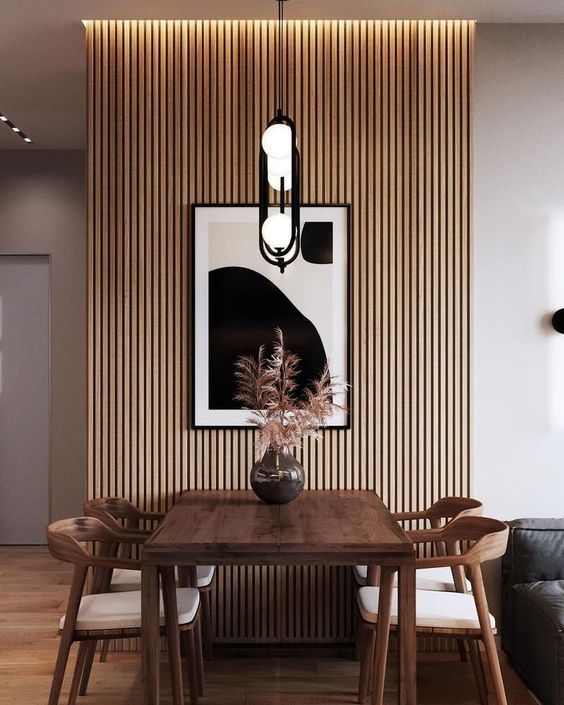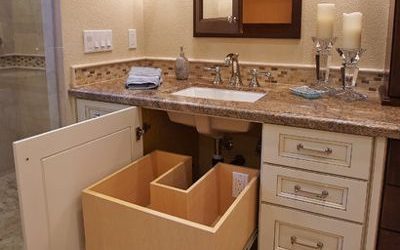
Source: robinbondinteriors.com
“Wall treatment” refers to the various techniques and materials used to enhance and decorate the surfaces of walls within a space. Wall treatments go beyond the basic application of paint and often involve the use of different elements such as wallpaper, textures, moulding, panelling, and other decorative applications. The goal of wall treatments is to create visual interest, add texture, and contribute to the overall aesthetic and atmosphere of a room.
Wall treatments can encompass a wide range of creative options, and the choice of treatment depends on the desired style, functionality, and the overall design vision for the space. These treatments play a crucial role in transforming plain walls into focal points, contributing to the overall character and ambiance of the interior.
-
Here’s a comprehensive overview of wall treatments in interior design:
1. Paint:
- Color Palette:
- Paint is one of the most common and versatile wall treatments. Choose colors that complement the overall design scheme and evoke the desired mood.
- Choose colors that reflect the mood you want to create. For example, cool tones like blues and greens can evoke a calm atmosphere, while warm tones like reds and yellows can create a more vibrant and energetic feel.
- Consider the size of the room. Lighter colors tend to make a room feel larger and more open, while darker colors can add coziness and intimacy.
- Accent Walls:
- Painting one wall in a different color or texture can create a focal point in a room.
- Create an accent wall by painting one wall in a bold or contrasting color. This adds visual interest without overwhelming the entire space.
- Use patterns or stencils on an accent wall for a unique touch.
- Remember to test paint colors on a small section of the wall before committing to a full application. Lighting conditions can affect how a color appears in a space, so it’s essential to consider natural and artificial lighting when choosing paint colors. Additionally, consider the function of the room and how different colors may influence the overall atmosphere.

Source: ellos.se
2. Wallpaper:
- Patterns and Textures: Wallpaper comes in various patterns, textures, and finishes, allowing for endless design possibilities.
- Accentuating Features: Use wallpaper to highlight architectural features like alcoves or to create an accent wall.
- Mural Wallpaper: Choose a mural wallpaper to make a bold statement. Murals can depict landscapes, cityscapes, nature scenes, or abstract designs, transforming your wall into a work of art.
- Geometric Patterns: Use wallpapers with geometric patterns to add a modern and stylish touch to the space. Chevron, herringbone, or hexagonal patterns are popular choices.
- Botanical and Floral Prints: Bring nature indoors with botanical or floral print wallpapers. These can add a sense of freshness and vitality to your space.
- Stripes and Chevron: Create a sense of height or width with vertical or horizontal striped wallpapers. Chevron patterns can add a dynamic and energetic feel to a room.
- Vintage and Retro Designs: Explore vintage or retro-inspired wallpaper designs to add a touch of nostalgia to your space. This can be particularly effective in creating a themed room.
- Color Gradient: Choose wallpapers with a color gradient for a subtle and sophisticated look. This can create a calming effect and make the room feel more expansive.
- Metallic Accents: Incorporate wallpapers with metallic elements for a touch of glamour. Gold, silver, or copper accents can add a luxurious feel to the room.
- Customized Wallpaper: Consider customizing wallpaper with a design that reflects your personal style or matches the theme of your home.
- Temporary or Peel-and-Stick Wallpaper: If you’re renting or want a temporary change, consider peel-and-stick wallpapers. They are easy to apply and remove without damaging the walls.
- Powder Rooms and Small Spaces: Experiment with bold and dramatic wallpapers in small spaces like powder rooms. Since these spaces are not used as frequently, you can be more daring with your choices.

Source: wallmur
3. Wainscoting and Beadboard:
- Panelled Look: Wainscoting involves adding decorative panels to the lower portion of a wall. Beadboard is a type of panelling with narrow vertical planks.
- Traditional and Classic: These treatments add a touch of tradition and can be used to protect walls from wear and tear.
- Raised Panel Wainscoting: This style features raised, framed panels on the lower portion of the wall, creating a formal and elegant look.
- Flat Panel Wainscoting: A simpler style with flat panels that can suit both traditional and modern interiors.
- Beadboard Wainscoting: Beadboard consists of narrow, vertical planks with a distinctive groove pattern. It adds a charming and cottage-like feel to a space.
4. Moulding and Millwork:
- Crown Moulding: Installed at the top of walls, crown moulding adds elegance and a finished look to a room. This type of moulding adds a finished look to a room and can vary in size and complexity.
- Chair Rail:
- Classic Chair Rail: Placed at chair height, chair rail moulding can be functional as well as decorative. Install a chair rail horizontally on the wall to add a decorative element and protect the wall from chair backs and furniture.
- Picture Frame Moulding: Combine chair rail with picture frame moulding to create panels on the lower portion of the wall. This adds a sense of depth and detail.

Source: Etsy
5. Textured Wall Finishes:
- Venetian Plaster: This decorative technique involves applying plaster and polishing it to create a smooth, marble-like finish.
- Stucco or Concrete Finishes: These provide a textured and industrial appearance.
6. Stone and Brick Veneer:
- Exposed Brick: Exposed brick walls add character and an industrial feel to a space.
- Stone Veneer: Lightweight stone veneer can be applied to create the look of a stone wall without the weight.
7. Wood Panelling:
- Shiplap: Horizontal wood panelling with slight gaps between boards, often associated with a rustic or coastal aesthetic.
- Reclaimed Wood: Using reclaimed wood for panelling adds warmth and character.
- Traditional Raised Panelling: Consists of solid wood panels with raised or recessed details. It’s often associated with formal and traditional interiors.
- Beadboard Panelling: Features narrow, vertical planks with a distinctive groove or bead between each plank. It’s a classic and versatile choice often used in cottage or farmhouse-style designs.
- Shiplap Panelling: Horizontal boards with slight gaps between them, creating a distinctive and rustic look. Shiplap is commonly associated with coastal and farmhouse aesthetics.
- Flat Panelling: Smooth, flat wood panels without intricate detailing. This type of panelling can work well in modern or minimalist designs.
- Reclaimed Wood Panelling: Utilizes recycled or reclaimed wood from old structures, giving a space a rustic and weathered appearance.

Source: origin-global.com
8. Fabric Wall Coverings:
- Upholstered Walls: Fabric can be applied to walls for a luxurious and textured look.
- Tapestries or Fabric Panels: Hanging textiles can add color and interest to a space.
9. Tile and Backsplashes:
- Tile Accents: Tiled walls can be used as accent features in kitchens, bathrooms, or as a decorative element in other areas.
- Backsplashes: Typically used in kitchens and bathrooms, backsplashes protect walls and add a decorative touch.
Considerations for Wall Treatments:
- Scale and Proportion: Ensure that the chosen wall treatment suits the scale of the room.
- Lighting: Consider how lighting, both natural and artificial, will interact with different wall treatments.
- Room Function: The purpose of the room and its intended atmosphere should guide the choice of wall treatments.

Source: lovelight.com.au
Conclusion
The combination of various wall treatments can result in a dynamic and visually engaging interior space. The key is to balance aesthetics with functionality and choose treatments that align with the overall design vision.
When selecting a wall treatment, it’s crucial to consider the overall style of the home, the function of the space, and the preferences of the occupants. Combining different wall treatments in various rooms can create a dynamic and visually interesting home interior.
Your Title Goes Here
Your content goes here. Edit or remove this text inline or in the module Content settings. You can also style every aspect of this content in the module Design settings and even apply custom CSS to this text in the module Advanced settings.

About Author apurva nagure
Your Title Goes Here
Your content goes here. Edit or remove this text inline or in the module Content settings. Your content goes here.
.
You May Also Like…
“Sinks that Wow: A Guide to Bathroom Sink Designs”
Source: behance.netYour bathroom is more than just a utilitarian space; it's a canvas for personal expression and...
Sustainability In Interior Design
As the world shifts towards a more environmentally aware mindset, the concept of sustainability has become integral to...
Your Title Goes Here
Your content goes here. Edit or remove this text inline or in the module Content settings.



